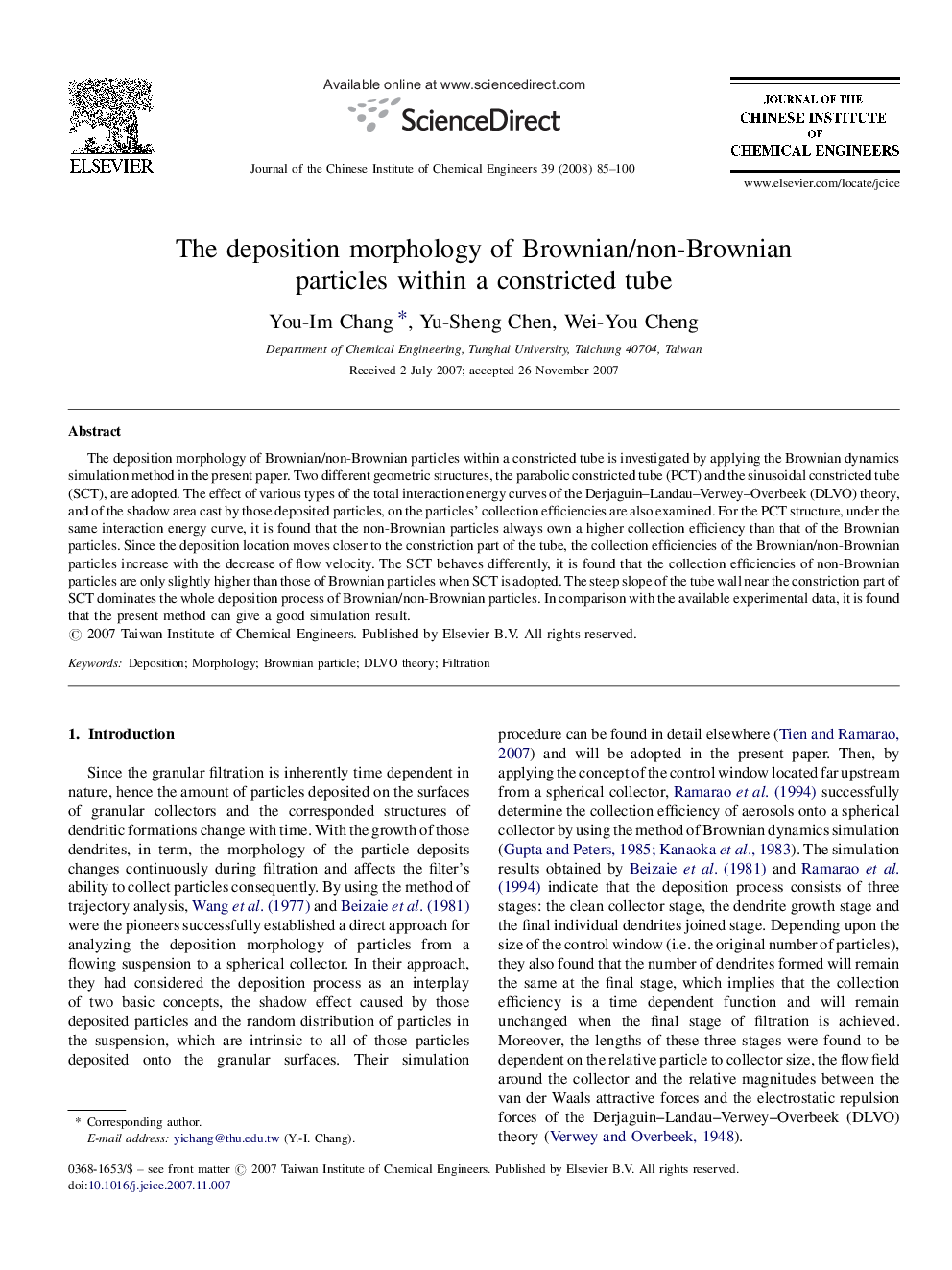| Article ID | Journal | Published Year | Pages | File Type |
|---|---|---|---|---|
| 217697 | Journal of the Chinese Institute of Chemical Engineers | 2008 | 16 Pages |
The deposition morphology of Brownian/non-Brownian particles within a constricted tube is investigated by applying the Brownian dynamics simulation method in the present paper. Two different geometric structures, the parabolic constricted tube (PCT) and the sinusoidal constricted tube (SCT), are adopted. The effect of various types of the total interaction energy curves of the Derjaguin–Landau–Verwey–Overbeek (DLVO) theory, and of the shadow area cast by those deposited particles, on the particles’ collection efficiencies are also examined. For the PCT structure, under the same interaction energy curve, it is found that the non-Brownian particles always own a higher collection efficiency than that of the Brownian particles. Since the deposition location moves closer to the constriction part of the tube, the collection efficiencies of the Brownian/non-Brownian particles increase with the decrease of flow velocity. The SCT behaves differently, it is found that the collection efficiencies of non-Brownian particles are only slightly higher than those of Brownian particles when SCT is adopted. The steep slope of the tube wall near the constriction part of SCT dominates the whole deposition process of Brownian/non-Brownian particles. In comparison with the available experimental data, it is found that the present method can give a good simulation result.
